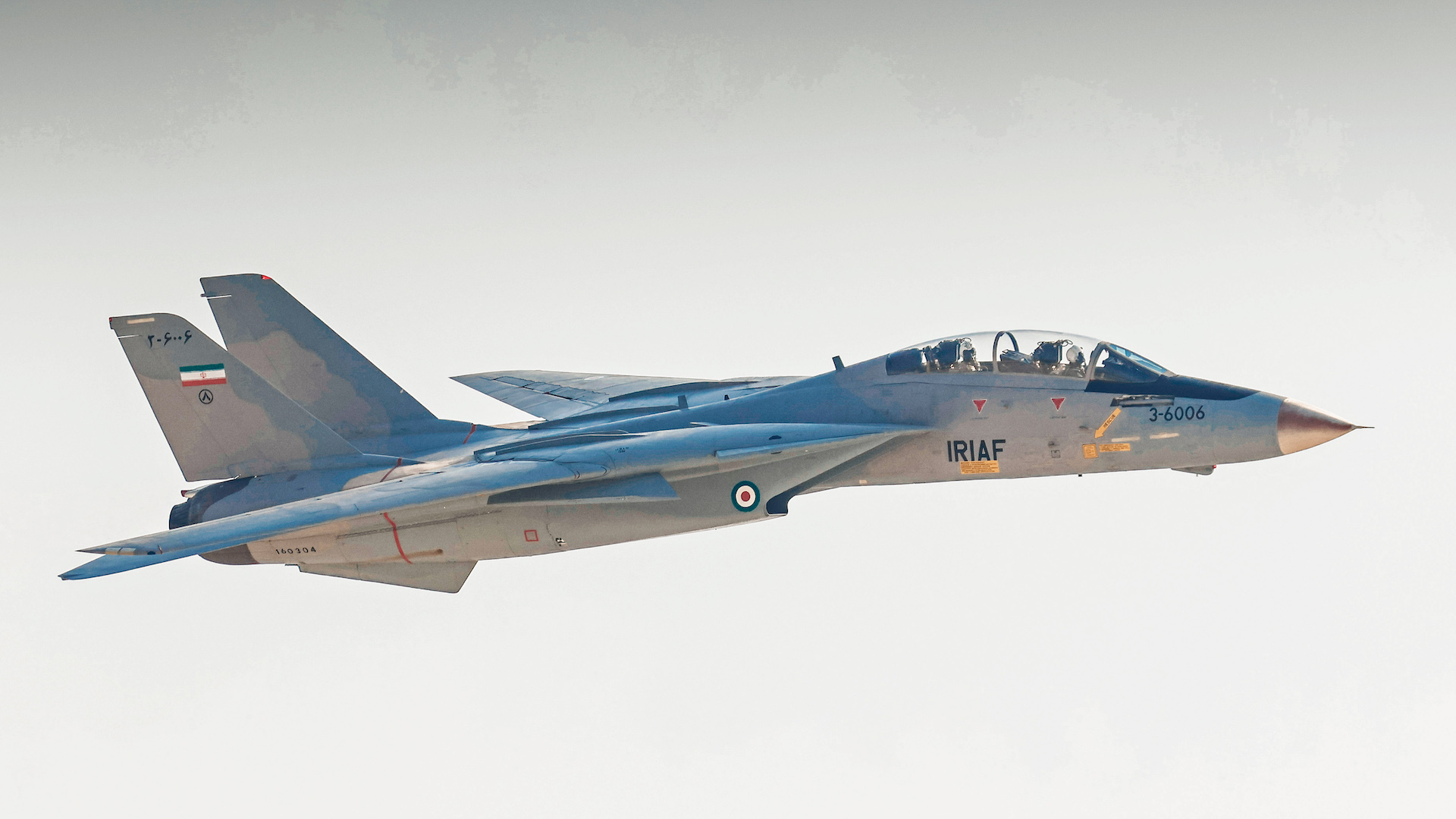As the world’s only operator of the legendary F-14 Tomcat swing-wing fighter, the Islamic Republic of Iran Air Force (IRIAF) has a unique airpower status. A recent airshow provided the chance for a very rare close-quarters look at the Cold War-era jet, which by now has very questionable capabilities and serviceability, while there are persistent reports that it could soon be replaced entirely by Russian-provided Su-35 Flanker multirole fighters.
Živojin Banković, a military aviation writer for the Serbian Tango Six website, shared with The War Zone photos taken by the team while on assignment in Iran, where he saw one of the country’s last F-14s, as well as other unusual aircraft types, at the 2024 Kish Air Show.
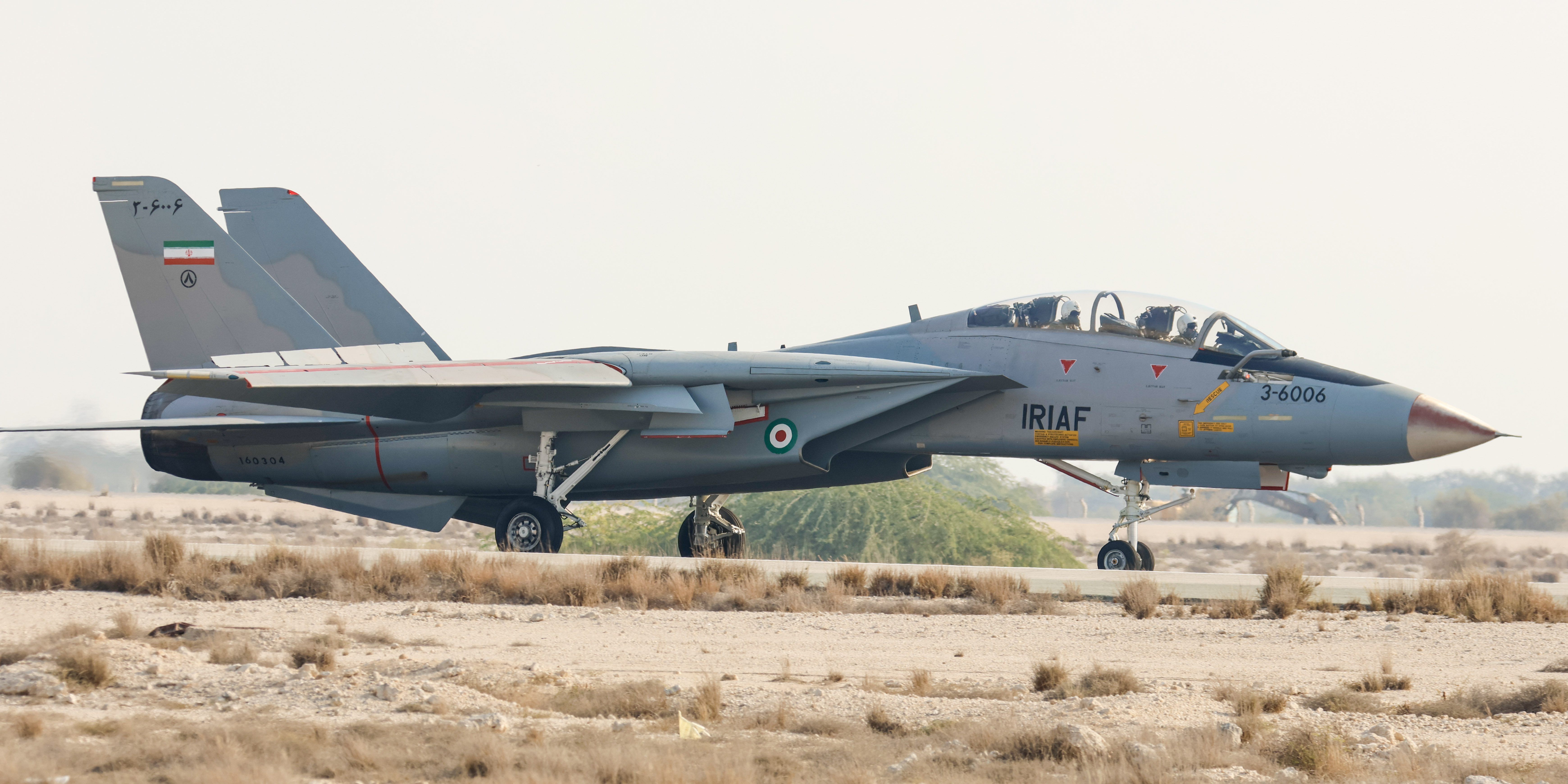
In fact, the 12th Iran International Aerospace Exhibition on Kish Island in the Persian Gulf, held from Dec. 10-13, offered what might be the public’s final opportunity to witness the ‘Persian Cats’ in action. Even getting to the event was something of a challenge, especially given the tensions and complex geopolitical situation in the Middle East right now.
For Banković, conditions were eased somewhat since his native Serbia is one of just five European nations whose citizens can enter Iran without visas, with Tehran allowing tourist stays of up to 15 days.
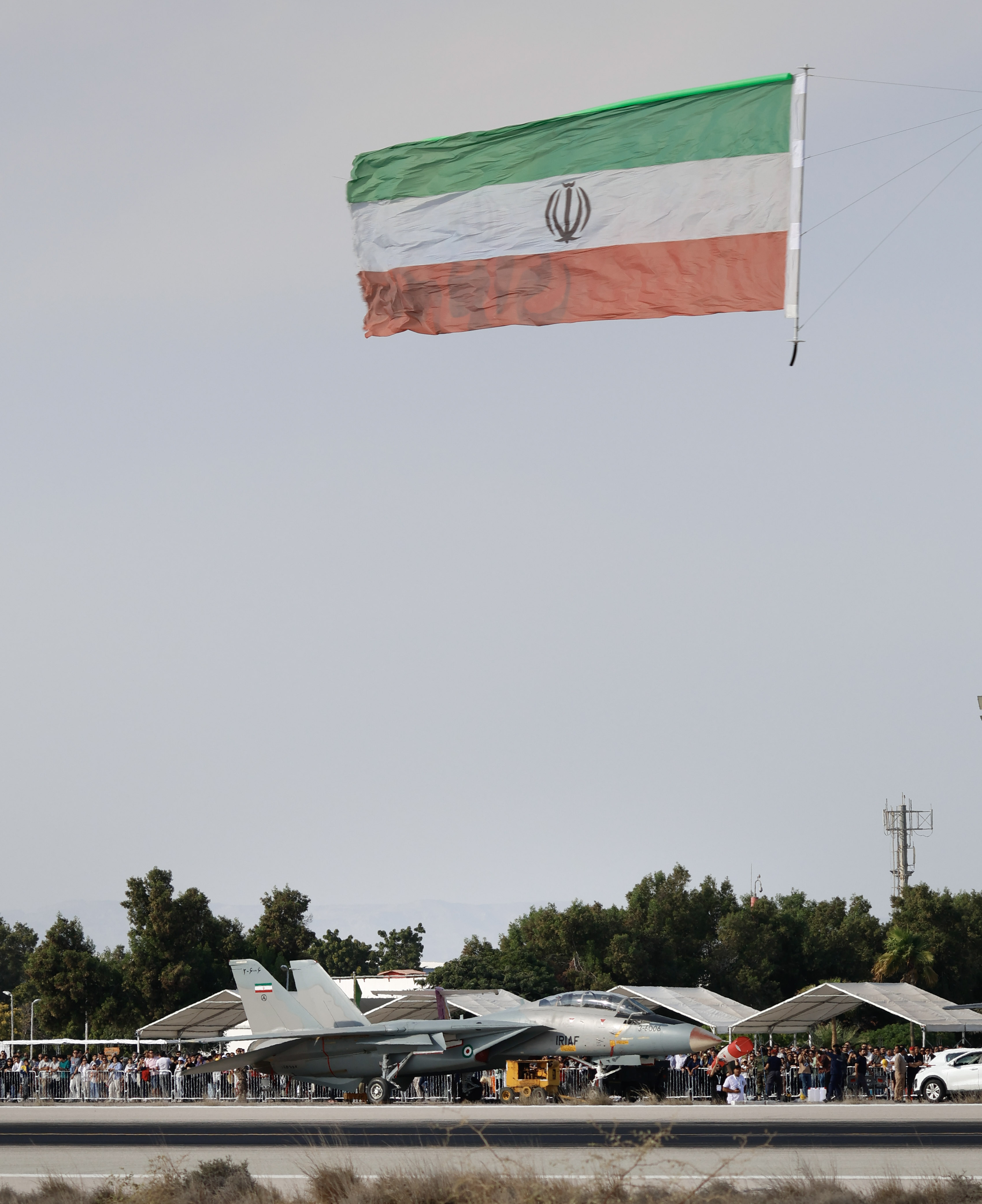
The 2024 Kish Air Show presented some challenges for the organizers, too.
On Dec. 5, in the run-up to the show, an Iranian-made Yasin jet trainer crashed while flying to the event, killing its two pilots, Colonels Hamidreza Ranjbar and Manuchehr Pirzadeh. The highly experienced test pilots had been expected to demonstrate the Yasin and U.S.-made F-5 fighters at the show.
While the cause of the crash has not been disclosed, there are unconfirmed reports the aircraft may have suffered a double engine failure.
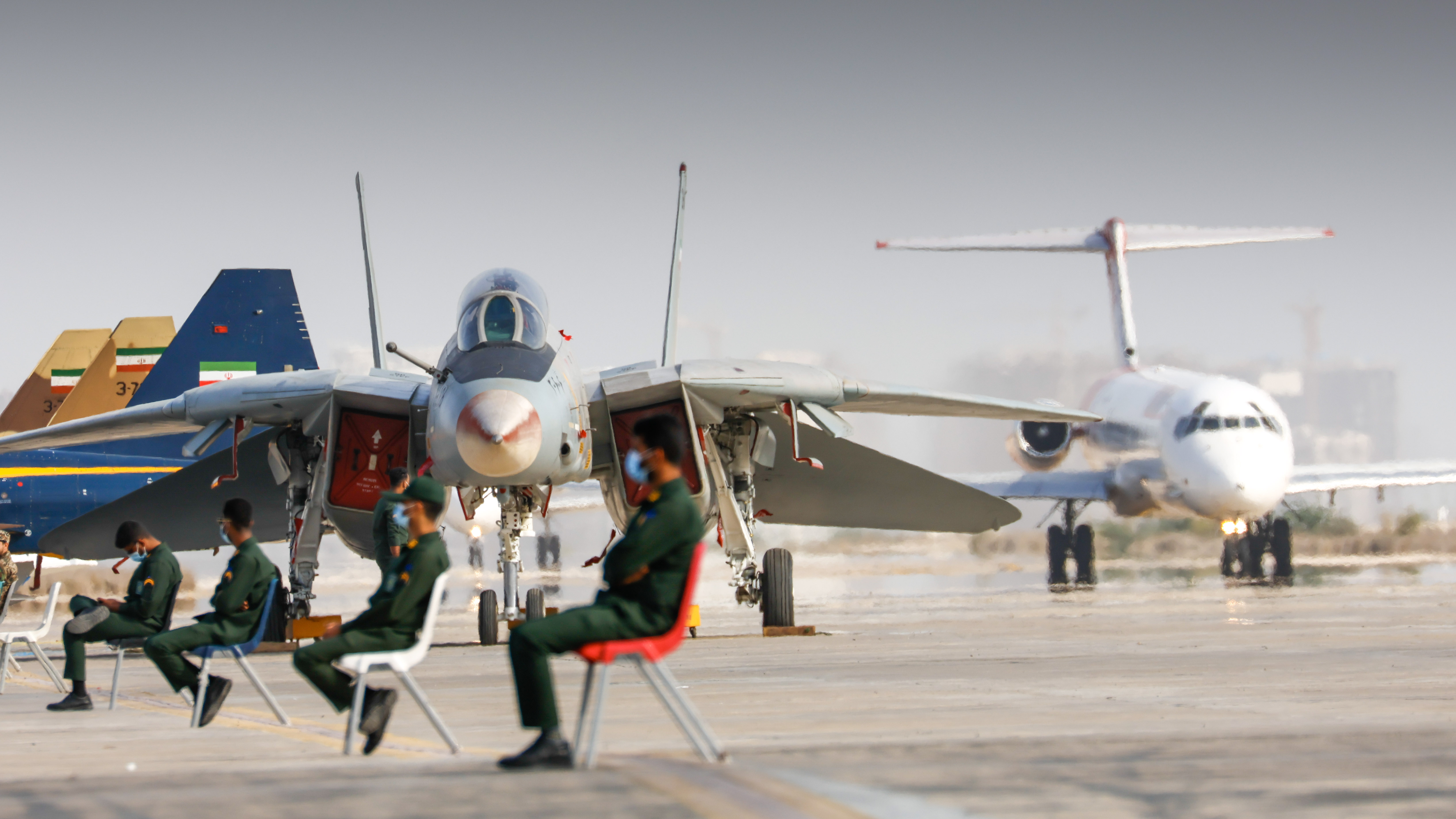
Understandably, the incident tempered the atmosphere at the airshow, resulting in a somewhat somber 12th edition.
Initially, organizers told Banković and his colleagues that there would be no military aircraft present at the airshow. Poised to cancel the trip to Iran entirely, another email arrived just a couple of days before the show was to begin — the IRIAF would participate after all.
Still, on arrival, there would be more problems for Banković, as he explained to The War Zone:
“The first day presented challenges for spotters who had purchased spotter tickets costing hundreds of dollars. Poor organization and coordination between the event staff, police, and military security prevented access to the designated airport areas — as had been promised. As an apology, the organizers offered a morning tourist tour of Kish Island on the final day.”
Despite these setbacks, journalists and enthusiasts subsequently enjoyed unprecedented access to the F-14 and its crew, relishing the chance to see the operational Tomcat on the ground and in the air — something impossible in the Western world since the U.S. Navy retired the fighter back in 2006.
The F-14 might still be the pride of the IRIAF, but the fleet has suffered high-profile issues throughout its eventful service in Iran.
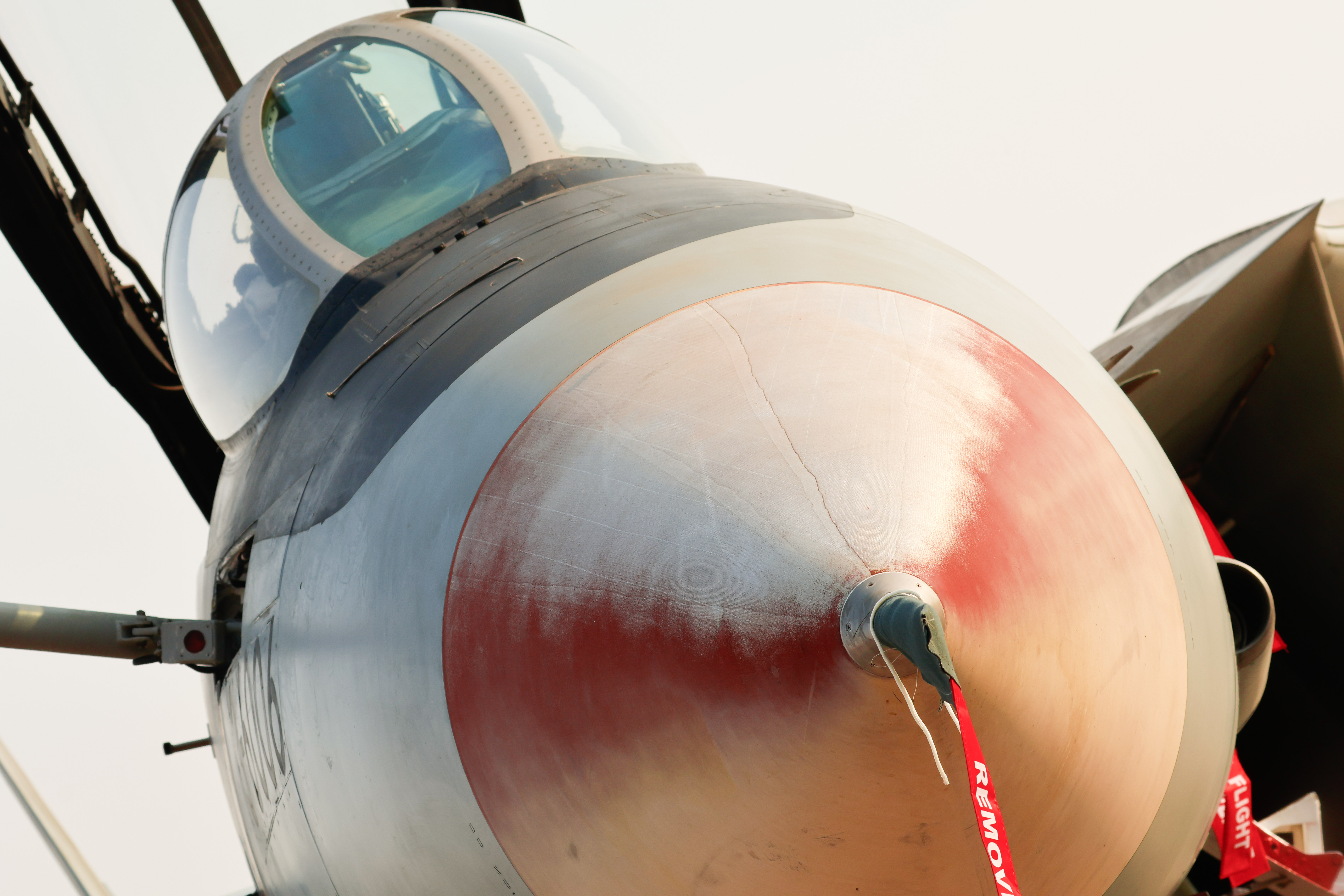
In particular, the F-14’s once-state-of-the-art AN/AWG-9 fire control radar has suffered from low serviceability, with the Tomcat fleet effectively being divided between those with fully functioning radars and those with more diminished capabilities. The current status of any surviving AIM-54 Phoenix and AIM-7 Sparrow air-to-air missiles is also a matter of debate, and Iranian programs to introduce alternative weaponry for the F-14 have had only very mixed results, as you can read more about here.
The fact that only one F-14 was included in the airshow is almost certainly indicative of broader problems within the IRIAF. As well as long-term maintenance issues with the Tomcats especially, the air force as a whole is facing the prospect of a potential broader conflict in the region, so serviceable combat jets would have been required for quick reaction alert and other high-priority tasks.
As it was, the IRIAF participated at Kish with a fleet of just 10 aircraft. The static display featured six aircraft (three F-5s and three PC-7 turboprop trainers), while four others participated in the aerial display (one F-14 and three F-4 Phantoms). This fell short of the originally announced lineup, which was supposed to include demonstrations of the Yasin, F-5, MiG-29 Fulcrum, and Yak-130 Mitten, along with additional aircraft in the static display.
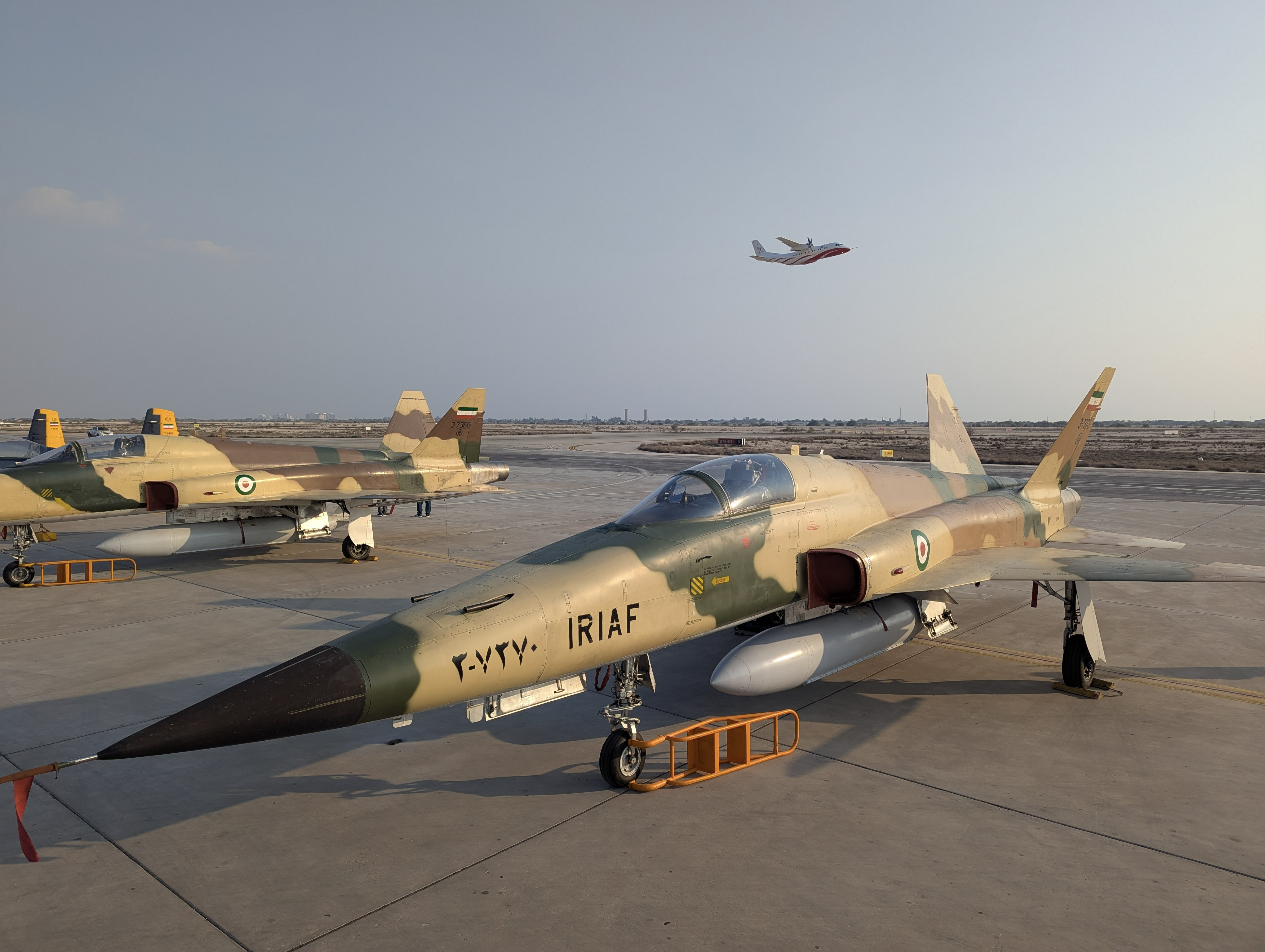
The modest IRIAF participation was not only attributable to the Yasin accident. After all, most of the fleet comprises aircraft that are between 30 and 50 years old — if not older.
Despite Iran’s ability to adapt to sanctions, maintaining such aging equipment is getting increasingly difficult. This was evident at the airshow itself — the F-14 flew only on the pre-show arrival day, performing a low pass, a turn, landing, and taxiing before remaining grounded for the rest of the show, departing only on Dec. 14.
A planned race between an F-14 and a Lamborghini was canceled due to technical issues with the Tomcat. Instead, the Lamborghini was raced against a civilian aircraft, a Hawker Beechcraft 400XP from the local Toos airline.
The participating F-14A (U.S. Navy Bureau Number 160334, Iranian serial number 3-6006) came from the 8th Tactical Air Base at Isfahan, which is home to Iran’s last three Tomcat squadrons: the 81st, 82nd, and 83rd Tactical Combat Squadrons.
In contrast, the F-4 fighter, increasingly also a global rarity, fared better at Kish. Three F-4Es from the 91st Tactical Combat Squadron performed impressive formation flybys and solo passes over three days, operating out of their home base, the 9th Tactical Air Base at Bandar Abbas.
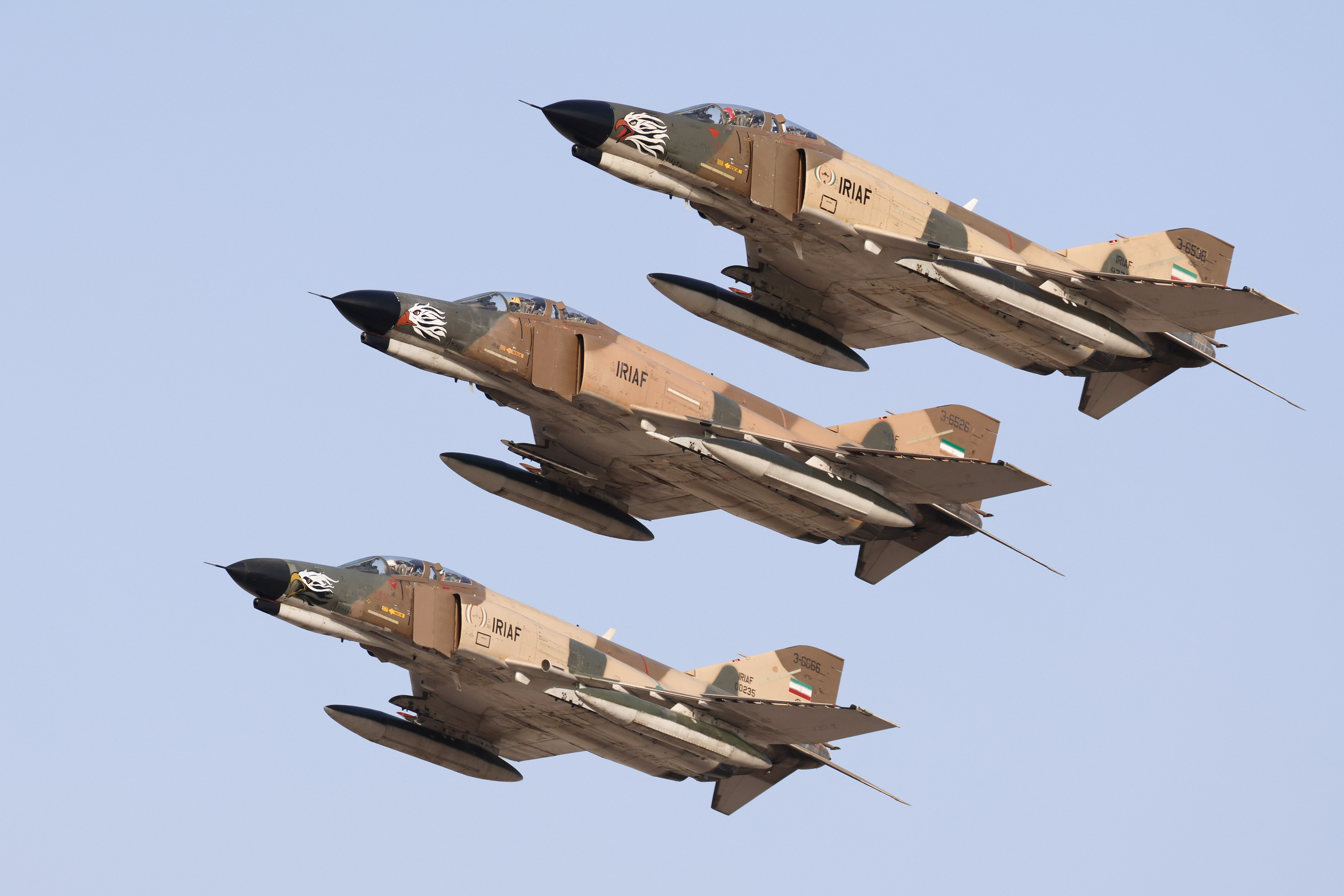
As it stands, there is a strong likelihood that the F-4 will outlive the F-14 in Iranian service, in an ironic twist. After all, the F-14 was originally introduced as a Phantom replacement for the U.S. Navy’s carrier air wings.
Back in 2023, an Iranian lawmaker told media in that country that Russia would deliver the first Su-35 fighters to the IRIAF “in the coming months.”
Shahriar Heidari, a member of the Iranian parliament’s National Security and Foreign Policy Committee, told the semi-official Tasnim news agency in January 2023 that the first examples of the Russian-made fighter were planned to be handed over to the IRIAF in the spring of 2023.
While that never happened, there have since been more reports indicating that the delivery of Flankers to Iran could be imminent. It’s widely presumed that the aircraft in question would be drawn from a batch that was already built for Egypt, before the deal with Cairo collapsed, apparently under U.S. pressure.
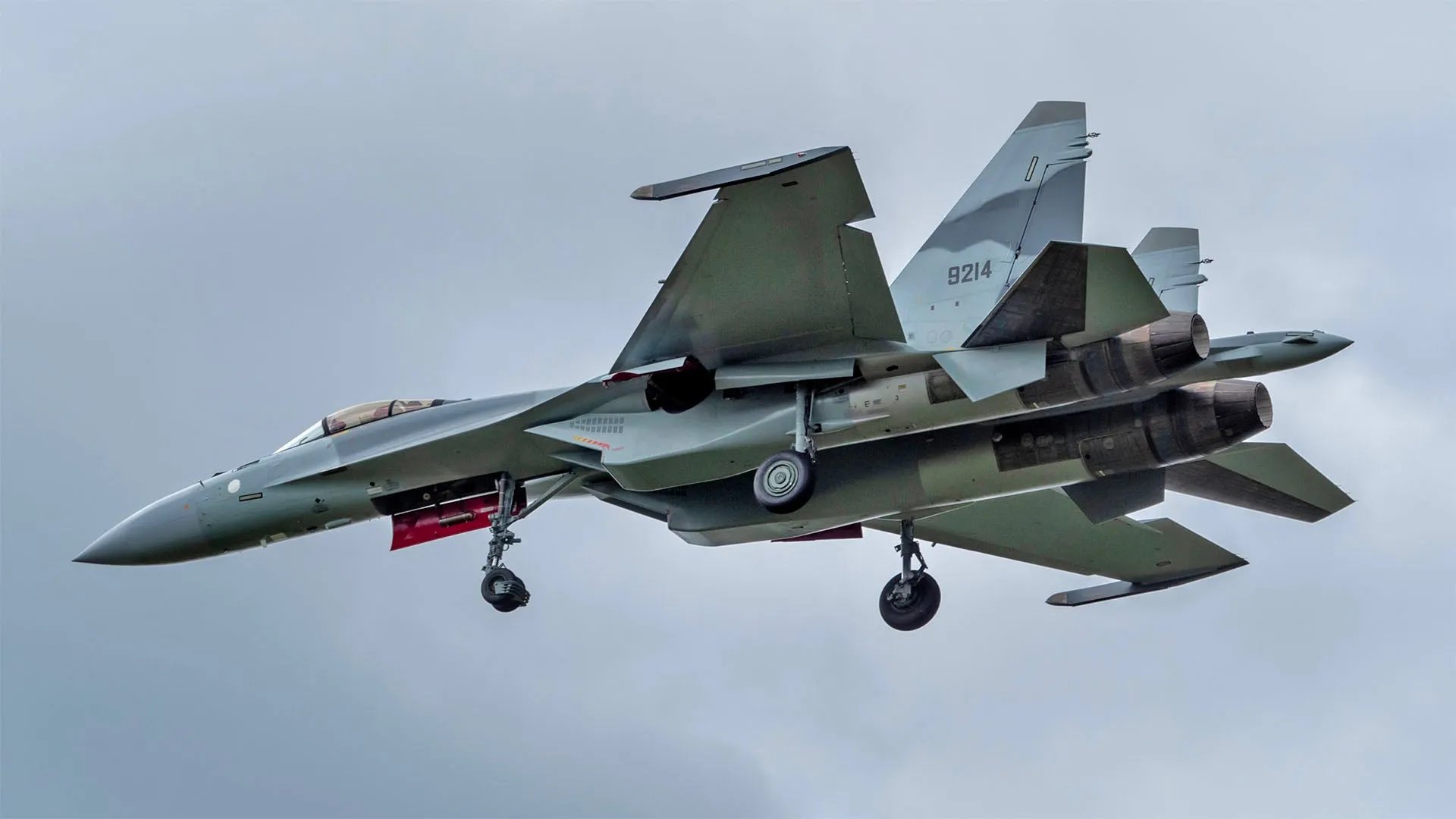
It’s unclear how many Su-35s Iran might be looking to acquire, but reports suggest that the IRIAF could be in line to receive 24 examples.
Such a deal makes good sense for Tehran and Moscow.
For three decades, Iran’s attempts to procure new Chinese- or Russian-made fighters to replace its aging fleets of F-4s, F-5s, and F-14s have failed, in the face of international sanctions.
But Russia’s full-scale invasion of Ukraine has led to it being ostracized, too, and increasingly seeking military and economic relations with Iran. This burgeoning relationship has seen, most notably, Shahed series one-way attack drones heading from Iran to Russia, as well as being built locally in Russian factories. With Moscow finding it increasingly hard to sell arms, Iran is now very much one of the most realistic clients.
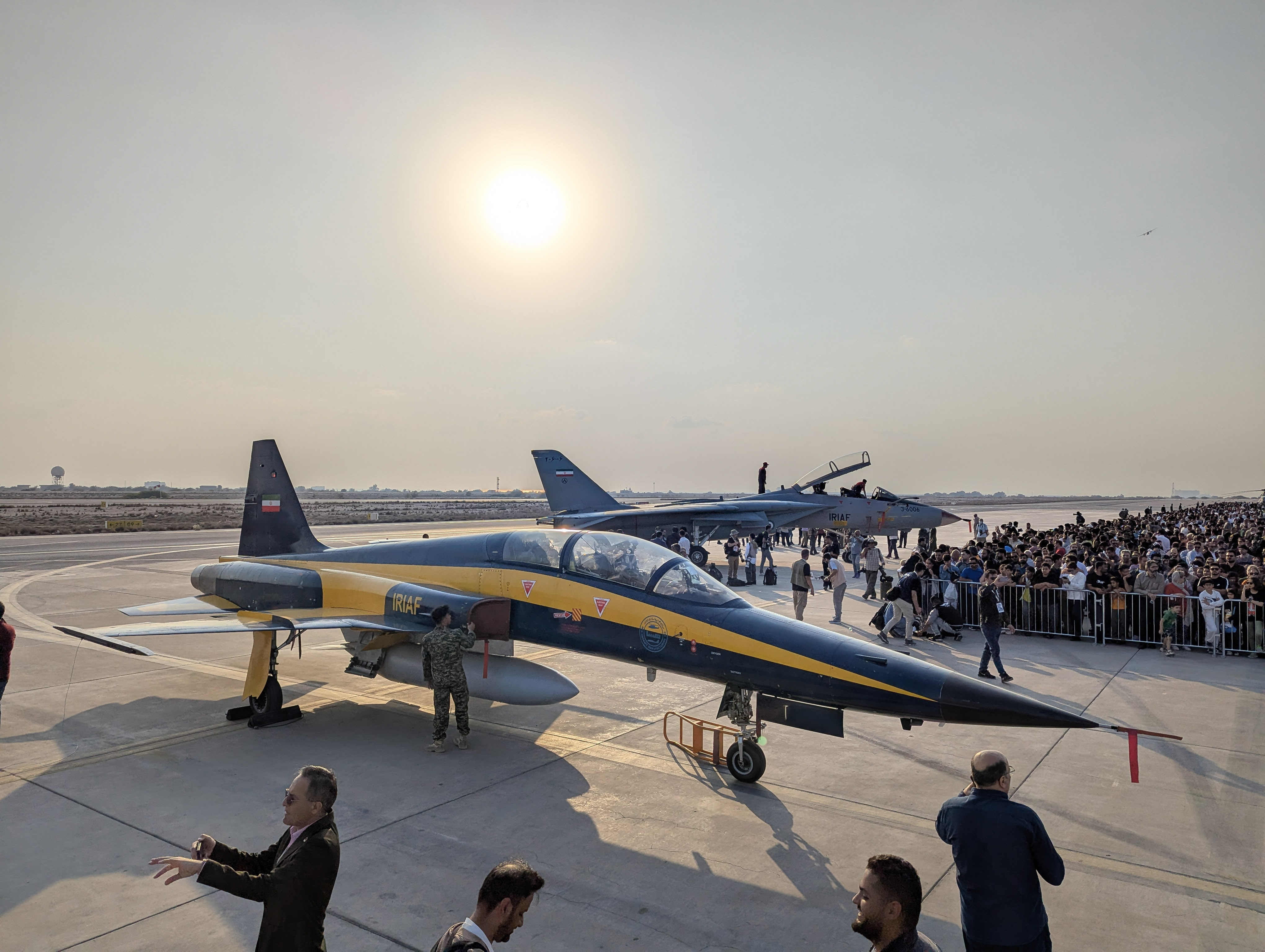
While a true multirole fighter, and a generational leap above the F-14A, the Flanker-E is similarly a twin-engine fighter, equipped with a powerful fire-control radar, and has the potential to carry very long-range air-to-air missiles. It would therefore be an obvious replacement for the IRIAF’s Tomcats.
In the past, Tasnim reported that at least some of the Su-35s are expected to be based at the 8th Tactical Air Base at Isfahan, where they would almost certainly supplement and eventually replace the F-14s of the 81st, 82nd, and 83rd Tactical Combat Squadrons.
For now, however, there’s no sign of imminent Su-35 deliveries to Iran, meaning that diminishing numbers of F-14s will likely have to continue in service for some time longer.
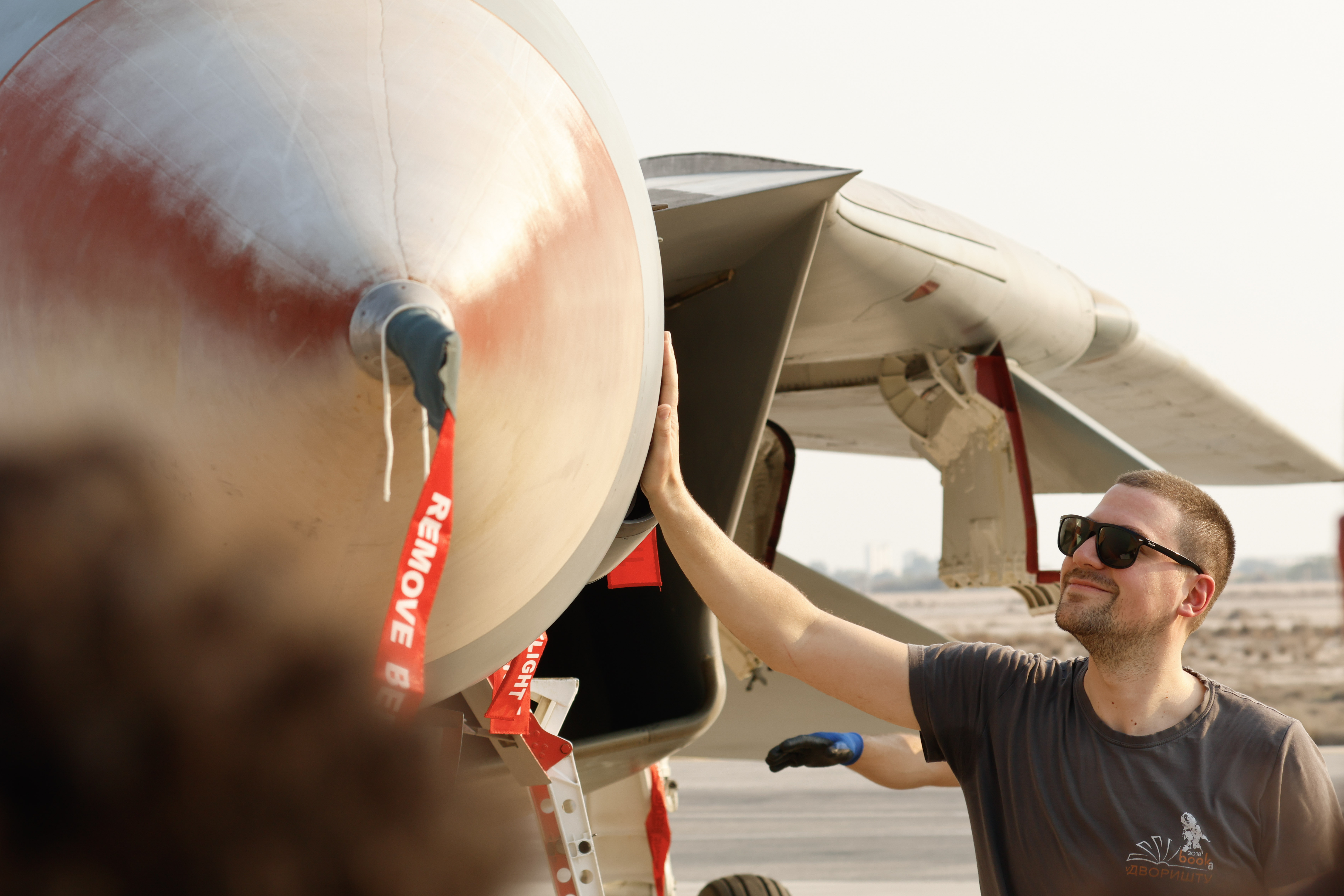
With Iran firmly ostracized from much of the international community, chances to see the IRIAF’s F-14s will likely be vanishingly few from now on.
With that in mind, the possibility of seeing just one of these rare ‘Persian Cats’ at the Kish Air Show is something that will remain long in the memories of those privileged to see it.
With thanks to Petar Vojinović, Živojin Banković, and the team at Tango Six.
Contact the author: thomas@thewarzone.com
